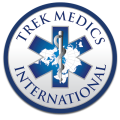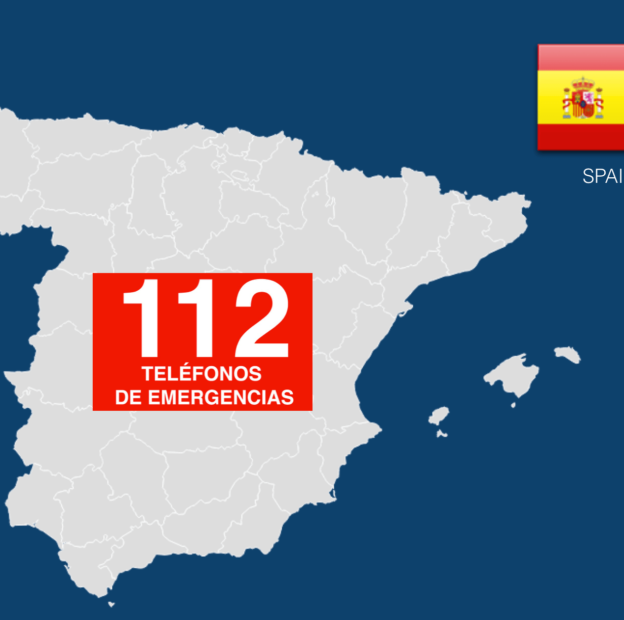AT-A-GLANCE
IN CASE OF EMERGENCY DIAL 112
- 061 may also work to call an ambulance in Spain, but 112 is recommended
- Known locally as SAMU or SEM, Spain’s prehospital emergency care system is staffed by doctors and nurses and is accessible throughout the country including in North African cities
HOW CAN I CALL AN AMBULANCE IN SPAIN?
IN CASE OF EMERGENCY DIAL 112 for Ambulance, Police and Fire
- 061 was historically the recognized phone number to call an ambulance in Spain
- Today the 061 call centers are being integrated into the new 112 control centers which manage and coordination dispatching for ambulance, fire and police together
- Calling 061 may still work in many areas, but according to a Spanish Health Ministry report published in January 2016 it is possible to call 112 in all parts of the country
Yes, 112 has been available across the country since 1997 when a national law was passed obliging telecommunications providers to ensure accessibility from any phone and carrier.
Prior to efforts by the European Union to streamline emergency communications through 112, Spain used several different numbers which are still accessible, including:
- Ambulances: 061
- Fire Department: 080
- Police: 091
- To call the Spanish police internationally, dial 91 582 29 00
- Civil Guard: 082 (who will contact other appropriate response agencies where required)
- Domestic/Gender-based Violence: 016
- Poison Control: 91 562 04 20
Call 112 with requests for emergency assistance in Spain. During disasters the Protección Civil will provide regular updates on their website.
Yes. Spain, like France and Germany, relies on a physician-based staff to provide prehospital emergency care, with clinical support from nurses, and logistics emergency technicians and ambulance support staff.
- Emergency Physician
- University degree in medicine (6 years); master of emergency medicine (1-2yrs); medical specialty (4-5yrs) in cardiology, anesthesiology, family medicine, or intensive care medicine
- Emergency Nurse
- University degree in nursing (4yrs); master of emergency nursing (1-2yrs); nursing specialty (2yrs) in community nursing, or medical surgical nursing
- Emergency Medical Technician
- Vocational/community college (2yrs)
- Patient Transport Assistant
- Private courses (4-8 weeks)
Spain uses a decentralized, physician led emergency response system that operates with two tiers of responders.
- After calling 112, the switchboard operator determines the nature of the emergency and the location and forwards it to a dispatching physician at the appropriate call center. The physician continues the interrogation of the caller and determines the appropriate level of response, including:
- Ground Teams, which can send one of more of the following units:
- Non-emergency Ambulance staffed with 1-2 EMTs/First Responders
- Basic Life Support (BLS) staffed with 2-3 EMTs
- Intermediate Life Support (ILS) staffed by an emergency nurse and 1-2 EMTs
- Advanced Life Support (ALS) /Mobile ICU, staffed with doctor, emergency nurse, 1-2 EMTs
- Inter-hospital transfer vehicle, staffed by a doctor, emergency nurse and 1-2 EMTs
- Air Medical (Helicopter Ambulance)
- Including a pilot, flight engineer, doctor, emergency nurse and possibly 1-2 EMTs
- Ground Teams, which can send one of more of the following units:
- Assisting Teams can also be dispatched depending on the needs at the scene of the incident
- Fire, police, civil defense
The Spanish SAMU maintain response time goals of less than 15 mins.
There are three types of emergency care facilities in Spain:
- Basic General Hospitals
- General surgery, anesthesiology, resuscitation
- General Hospitals w/ ICU
- Same services as the basic general hospital and an ICU
- Regional Hospitals
- Same services as above including specialty departments of neurosurgery, thoracic surgery, plastic surgery, and other specialties
ADDITIONAL INFO
You do not need any special vaccines to enter or travel in Spain. The CDC says that bats in Spain have rabies. It’s not a major risk, but could be for some, so recommends getting the rabies vaccine to two groups of travelers:
- Travelers involved in outdoor and other activities in remote areas that put them at risk for bat bites (such as adventure travel and caving).
- People who will be working with or around bats (such as wildlife professionals and researchers).
1986–‘General Sanitary Law’ 1986
- State financed universal coverage of ‘sanitary services’ (health services)
2002– Health became decentralized into Spain’s 17 autonomous zones by January 2002
- 1998–Andalucia the second and largest autonomous community to assume responsibility for its community’s health services under the ‘Andalucian Sanitary Law’
- allocates public and private funding for health services
Prehospital emergency care and transport is managed at the Autonomous Community (i.e,. state or provincial) level in Spain. Agencies and links for the 112 / 061 services in each autonomous community can be found here.
- Ballesteros S: “Unidades de soporte vital básico y avanzado en España: análisis de la situación actual (Basic and advanced life support units in Spain: analysis of the current situation)”An Sist Sanit Navar. 2012 Sep-Dec;35(3):489-90
- Carresi, Alejandro López. “The 2004 Madrid train bombings: an analysis of pre-hospital management.” Disasters 2008;32(1):41-65.
- Ministerio de Sanidad, Servicios Sociales e Igualdad: “Urgencias Extra hospitalarias Su organización en el Sistema Nacional de Salud.” Subdirección General de Información Sanitaria e Innovación – January 2016. Available at: https://www.msssi.gob.es/estadEstudios/estadisticas/docs/siap/Urg_extrah_Org_SNS_2016.pdf
- Quiepo de Llano E, Mantero Ruiz A, Sanchez Vicioso P, et al. Trauma care systems in Spain. Injury 2003;34(9):709-19.
- Servicios de Urgencia Médica de Madrid (SUMMA 112)
- Spanish Red Cross
- DYA de Barakaldo
SCOREBOARD
% of Seriously Injured Transported by Ambulance
[Source: 2013 Global Status Report on Road Safety, WHO]
ROAD TRAFFIC INJURY DEATHS
(PER 100,000 POPULATION)
[Source: 2015 Global Status Report on Road Safety, WHO]
REPORTED HOMICIDES
(PER 100,000 POPULATION)
[Source: 2014 Global Status Report on Violence Prevention, WHO-UNDP]




